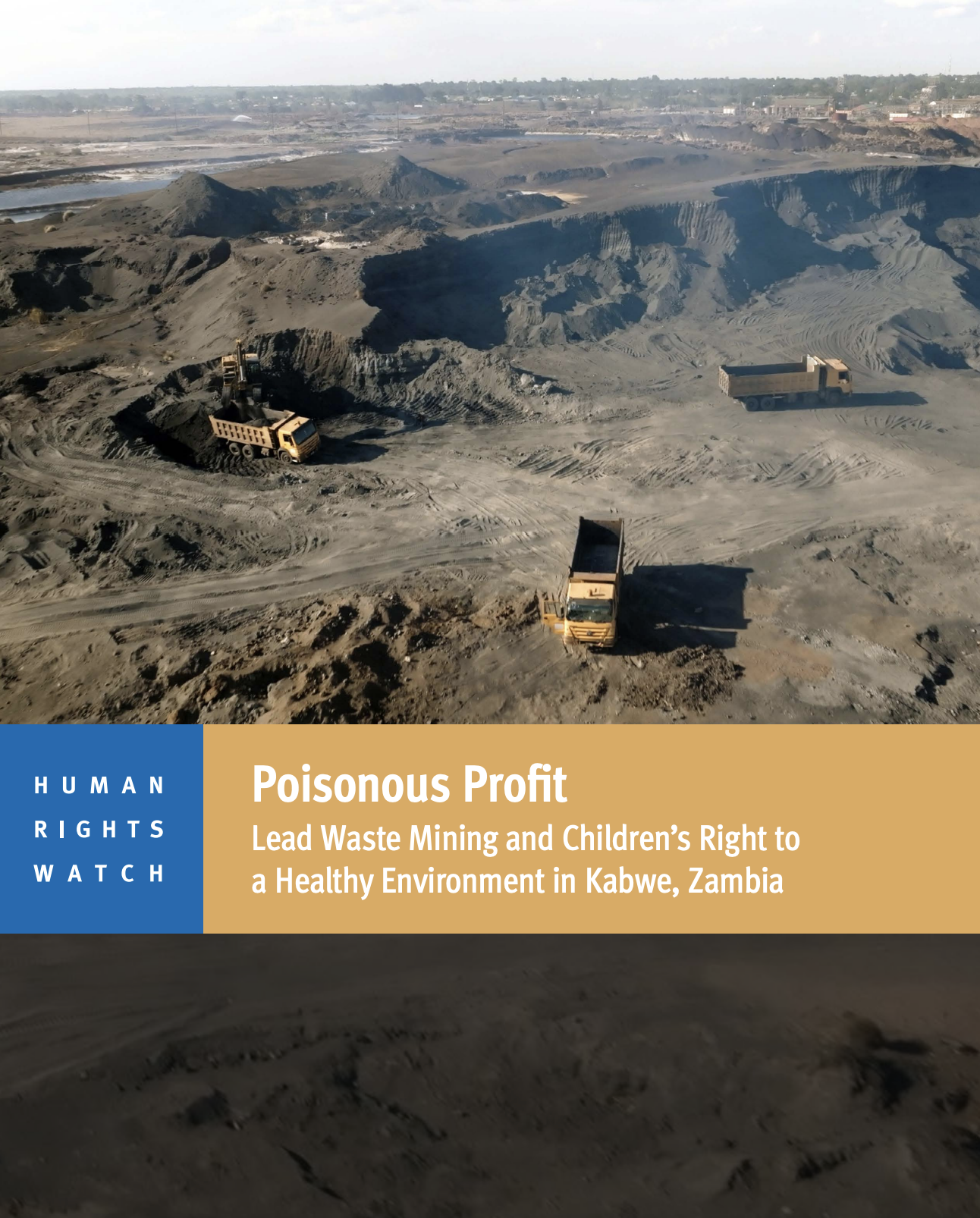Poisonous Profit Lead Waste Mining and Children’s Right to a Healthy Environment in Kabwe, Zambia
Kabwe, the capital of Zambia’s Central Province, is one of the most lead-polluted places in the world because of contamination from a former industrial lead and zinc mine and smelter. Lead is a heavy metal that is highly toxic to humans when ingested or inhaled, particularly to children and women during pregnancy. The mine, which was established during the British colonial period and officially closed in 1994, has never been cleaned up. Decades of mining and smelting operations have resulted in an estimated 6.4 million tons of lead-bearing waste piles. Up to now, lead dust from the former mine’s large, uncovered waste dumps blows across nearby residential areas and contaminates homes, yards, schools, and roads, exposing up to 200,000 people. Medical researchers estimate that over 95 percent of children living near the former mine have elevated lead levels in their blood, and that about half of these children urgently require medical treatment.
This report documents the harmful mining, removal, and processing of lead-contaminated waste at and near the former Kabwe mine, and the impact this has on the rights to health and to a healthy environment, particularly as it affects the rights of children. Its findings are based primarily on research interviews, conducted between March 2022 and November 2024, with miners and community members in Kabwe, as well as government officials, experts, civil society groups, donor agencies, companies, and other key stakeholders in Kabwe and in Zambia’s capital, Lusaka. Human Rights Watch also conducted remote research interviews, open-source research, geospatial analysis, and reviews of government, non-governmental, and expert documents, as well as responses to Human Rights Watch letters from the government and companies.
